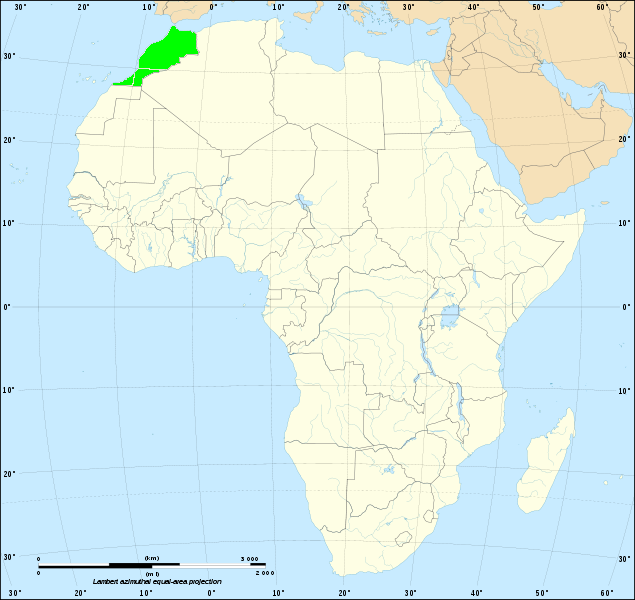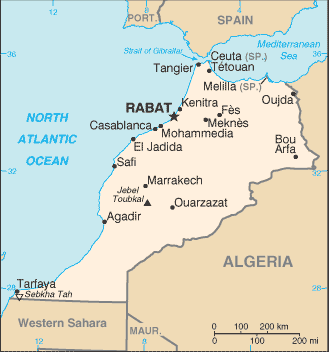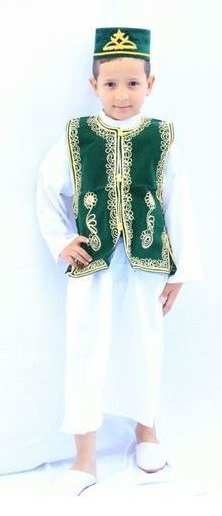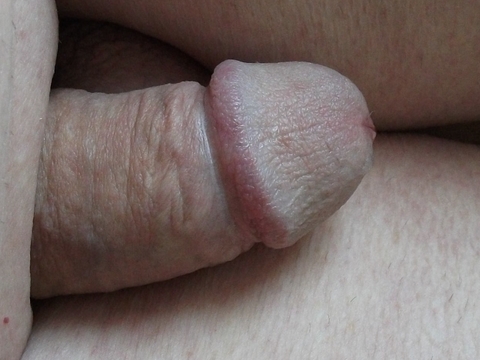
As a French Protectorate and since independence in 1956

 |
As a French Protectorate and since independence in 1956 |
 |
The original inhabitanyts of Morocco were the Amazigh (Berbers) and their languauge, Tamazight, is still one of the two official languages on the country, the other beikng Arabic. Islamic expansion began in the seventh century; in 670 AD the first Islamic conquest of the North African coastal plain took place. Arabs brought their customs, culture and the religion of Islam, to which most of the indigenous Berbers converted. After adopting Islam, Berber dynasties formed governments and reigned over the country. Following the reconquista of the Iberian Peninsula and the demise of Moorish Spain, large numbers of Muslims and Jews fled to Morocco, giving the country an ethnic mix that in several cities persists to this day. Now the Amazighh are in a minority, variously estimated at 28 to 40%.
 |
 |
Successful Portuguese efforts to invade and control the Atlantic coast in the fifteenth century did not profoundly affect the Mediterranean heart of Morocco. But as Europe industrialised, Morocco became an increasingly attractive proposition for colonisation. France showed a strong interest in Morocco as early as 1830. The Treaty of Fez (signed on March 30, 1912) made Morocco a protectorate of France. By the same treaty, Spain assumed the role of protecting power over the northern and southern Saharan zones. In a sense this division persists, being the fundamental origin of the disputed status of Western Sahara - territory claimed by Morocco.
Morocco recovered its political independence from France in 1956 when, on April 7 of that year, France officially relinquished its protectorate. The internationalised city of Tangier was reintegrated with the signing of the Tangier Protocol on October 29 of the same year.


|
According to World Population Review Morocco has the world's highest circumcision rate, at 99.9%. This isn't really possible to justify. Can we be sure that it beats Afghanistan at 99.8%? The fact remain that male circumcision is pretty much universal. As in many Islamic countries boys are circumcised at age 5-7. It is a major occasion and boys are dressed in a formal costume, as shown here. It is also the occasion for a big family party! This little boy doesn't seem remotely nervous about what is going to happer to him, but then, Morocco has a very good health system so why should he? Young Moroccan boy in his circumcision outfit. |
A reader's story (first posted 2009)
I’m French but I was born at Rabat in Morocco in 1939 where my father had been sent as history and geography teacher. My dad died when I was 5 years old.
When I was small a doctor dilated the opening of my foreskin, after which I never had any infections or problems with my prepuce. The opening was large enough to allow the glans to pass through, but my mother said I had a too long a foreskin and I had to keep it back all the time so as to leave my glans exposed. But she did not use the word glans. Never did I hear mum use words such as foreskin, glans or circumcision. She had her own vocabulary. Her words were: tap, hood, mushroom and the verb to cut. I heard the word circumcision only once when we came back to France, in the Antiquaille Hospital at Lyon - and then spoken only by the doctors.
Then, some days later, while we were at the beach, she spoke to me for the first time about circumcision. We were installed at the back of the beach in rocks as high as the Oudayas (the local Kasbah), on the Rabat-Salé side as usual. Most Europeans despised this part of the beach and left it to the Moroccans. In those days, all the small Arab boys played and swam naked. I preferred going on this beach because, to my great joy, my mother left me naked there also.
On this particular day she pointed out to me, in her jargon of course, that only the youngest boys had a ‘tap’ like mine adding that, to become men with their ‘mushroom’ completely exposed, all the children of my age ‘had to be cut’. Of course I had already noticed, but I thought that their foreskin was retracted just as mum asked me to do, not they were cut. “It is necessary that the mushroom is always exposed, so this nasty hood must be taken away” said my mother. It was the only explanation ever given by my mother and I accepted it. In fact, she had begun preparing me for this event but the reasons were never made clear to me. I was so afraid that it will hurt. “Does this hurt?” I asked. “No! It is so quick that you don’t even have time to say ‘Phew!’. By then it is already over.”
The next instant she announced that she had to go back to France and that Fatima (she was a kind of nurse) would take me "au bled" in her family. I was to stay there for some time, during which she would arrange for me to be cut.
In fact it was a traditional Muslim circumcision that they inflicted on me, but why? Why did not mum take me to the hospital in Rabat, or to a private hospital to circumcise me? This I shall never know. Maybe before his death my father, being very interested in Moroccan culture, had asked mum to arrange for me to be circumcised as a kind of initiation. Either that or my mother thought it was an opportunity which would cost much less than circumcision at the hospital. The family of Fatima was rather poor and the few coins that mum would have been able to give her would have cost less a lot than the hospital.
The place was next to the Bou Regreg river, near the salt marshes and downstream of the railway bridge. It was not a village, just some low houses by the edge of Bou Regreg. We spent all our time bathing naked in the river. In my memories, it was paradise. Until, that is, a short time later when I was deprived of my foreskin according to the ritual norms in this family.
Of course, in those days the operation was performed without anaesthetic. Sat on a chair, legs spread, they cut the flesh amidst shouts, pain and blood. A Gillette razor blade was used to cut and remove the frenulum so that the foreskin could be retracted more fully, allowing it to be cut further back. Then the prepuce was pulled forward, stretched in front of the glans and slipped into a cracked stem before being cut with a knife. Henna pomade to stop haemorrhage, a small band of cloth as dressing and that’s all. Yet these are not bad memories for me. Of course, after we had the skin cut off we each had this fiendish pain. All the boys were absolutely stultified and I remember crying, but afterwards we were feeling very proud. Finally happy that it was finished, happy that we had passed the test, happy that we were men. I will not speak at length about all food that came later, the "chépakias", "makrouds" and "cornes of gazelle". I think that it was on this occasion that I drank my first Fanta.
Some days later, the wound was almost healed and Fatima took us all to bathe in the river and the dressings were taken away. There was a big red scar around the shaft and my bare glans was very sensitive, but I began to love the feeling of my whole glans being fully uncovered.
After my mother’s return from France, I came back home where she asked me to show her my new condition. She seemed disappointed. Some months later we came back to France and my mother drove me to the Antiquaille Hospital in Lyon for them to remove more. Now I’m seventy years old but I have never forgotten this time which was so important for me. Circumcision remains a very important topic for me.
Jean Ray - France
 |
 |
Personal testimony of members of the CIRCLIST discussion group.
Wikipedia
Maps courtesy of Wikimedia Commons and the US Central Intelligence Agency.